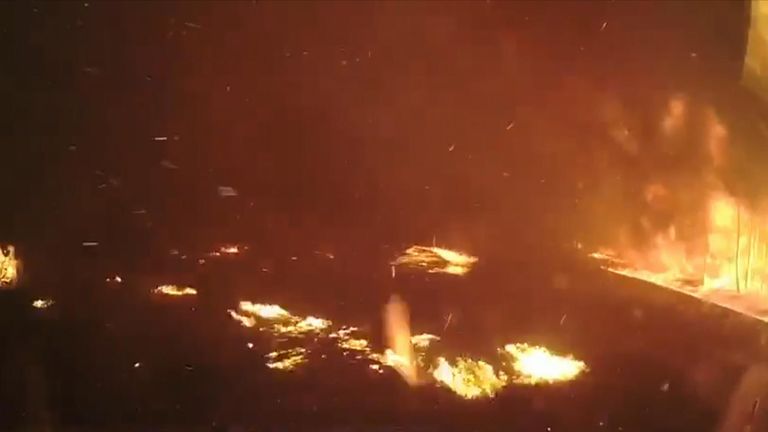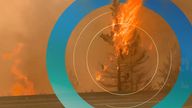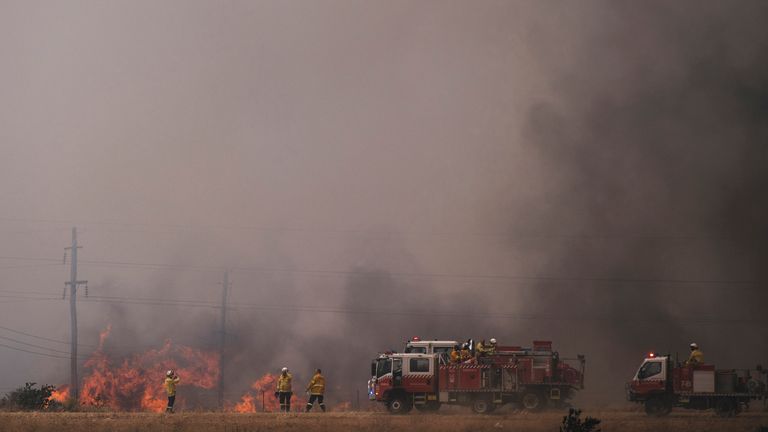Australian bushfires: State of emergency declared in Canberra as blazes worsen
Thirty-two people have been killed since the fires began, which have ravaged more than 10.4 million hectares (25.7 million acres).
Friday 31 January 2020 14:58, UK
A state of emergency has been declared in Australia's capital Canberra and surrounding areas, as strong winds and soaring heat threatens to send a huge nearby bushfire out of control.
Yet another heatwave is spreading across the country, which is expected to spark more dangerous bushfires in a region already devastated by the blazes.
The Australian Capital Territory (ACT) declared the state of emergency, which allows officials to appoint an emergency controller who can make decisions and control the movement of people around the state.
It also means that residents have to put an emergency plan into place in case of the "worse possible situation".
The fires near the capital in the Orroral Valley began on Monday, and have already burnt more than 18,500 hectares (71 square miles) - equivalent to nearly 10% of the state's land mass.
Speaking at a press conference, Australian Capital Territory chief minister Andrew Barr said: "The ACT is now facing the worst bushfire threat since the devastating fires of 2003.
"The combination of extreme heat, wind and dry landscape will place suburbs in Canberra's south at risk in the coming days.
"So given the best advice available to me I have just made a decision to declare a territory-wide state of alert for the Australian Capital Territory. This is effective now and will be in place for as long as Canberra is at risk."
The fires in the area are expected to grow over the weekend, threatening those who live in the country's capital.
Bushfires have been burning throughout the south and east of Australia for months now, as unusually high temperatures have fuelled the blazes.
:: Listen to the Daily podcast on Apple Podcasts, Google Podcasts, Spotify, Spreaker
On Friday, Queensland fire service, in the north east of Australia, declared that "bushfire season 2019 has ended" - but mother nature appeared not to heed the announcement, with the threat of fires still very much alive for many.
ACT Chief Minister Andrew Barr declared a State of Emergency on Friday, as the Orroral Valley bushfire continues to burn out of control. Hot and windy weather conditions forecast for the weekend are expected to increase the bushfire threat to homes in the Canberra region.
It is the worst bushfire threat for the area since 2003, when four people died and 470 homes were destroyed or damaged.
Thirty-two people have been killed since the fires began, which have ravaged more than 10.4 million hectares (25.7 million acres).
At least 2,600 homes have been destroyed and an estimated one billion animals have also been killed.







